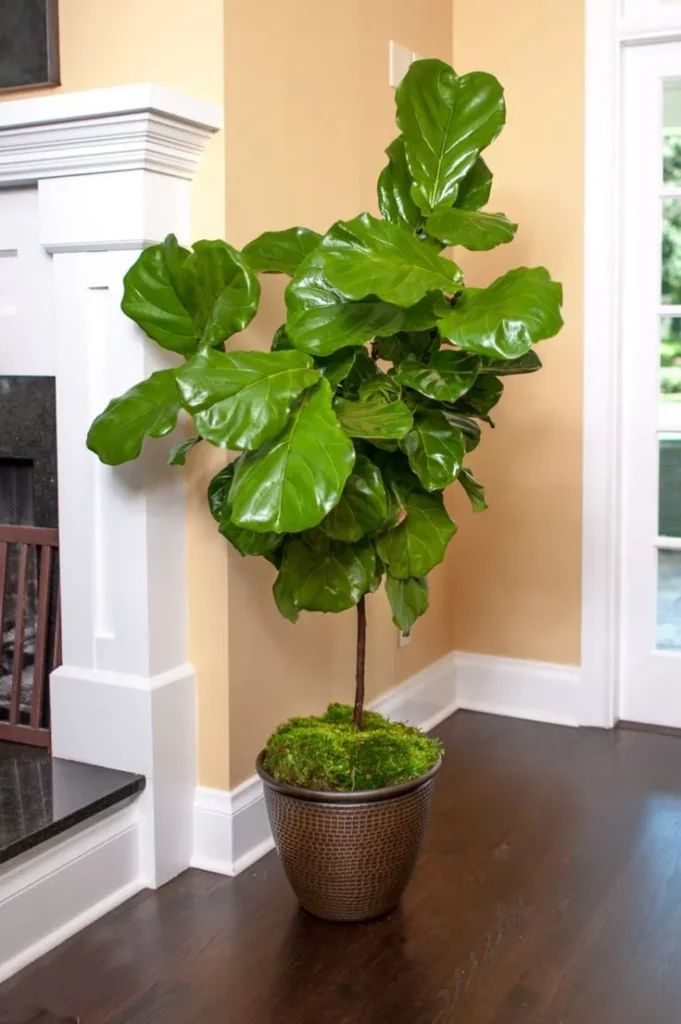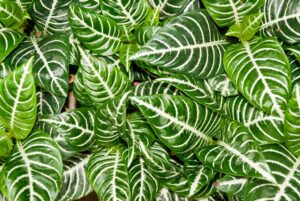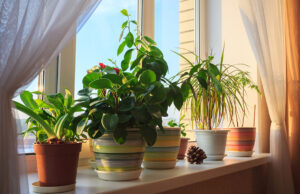Introduction
Are you looking to add a touch of nature and style to your living space? Tall houseplants are the perfect solution! They not only bring life and vibrancy but also improve air quality and create a calming atmosphere. In this article, we’ll explore 10 stunning tall houseplants that can transform your home into a lush oasis. Whether you’re a seasoned plant enthusiast or a beginner, there’s a plant on this list for you.
On This Page
1. Fiddle Leaf Fig (Ficus lyrata)
Why We Love It: The Fiddle Leaf Fig is a staple in modern home decor, known for its large, violin-shaped leaves that add a touch of sophistication. This plant thrives in bright, indirect light and prefers consistency, so avoid moving it around too much. Water when the top inch of soil dries out and dust the leaves occasionally to keep them looking their best.
Care Tips:
- Light: Bright, indirect light
- Water: When the top inch of soil dries out
- Humidity: Moderate
- Temperature: 65-75°F (18-24°C)
Pro Tip: If you notice leaf drop, adjust the light and water conditions. This plant can be a bit dramatic but is well worth the effort!
2. Bird of Paradise (Strelitzia reginae)
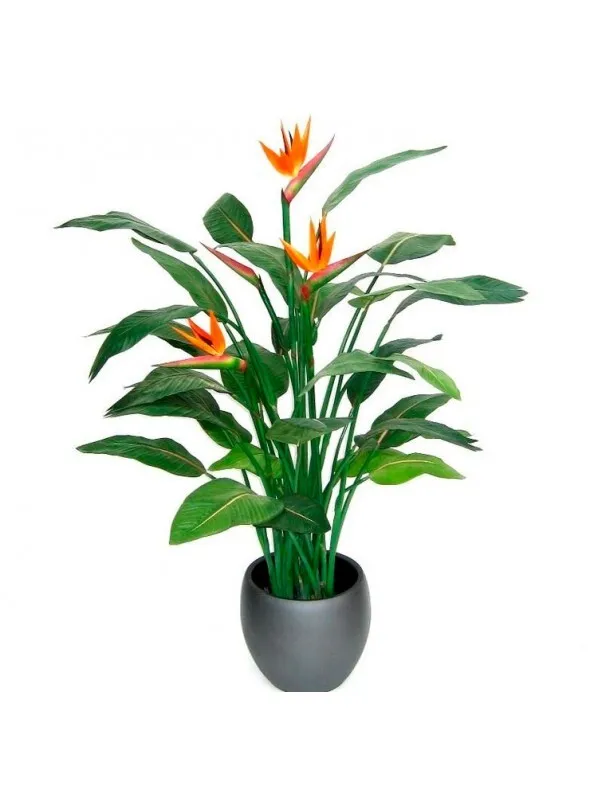
Why We Love It: Bring the tropics indoors with the Bird of Paradise. Its tall, banana-like leaves and stunning orange and blue flowers make it a true showstopper. This plant loves bright light and can even produce flowers if given enough sunshine.
Care Tips:
- Light: Bright light
- Water: Keep soil lightly moist
- Humidity: High
- Temperature: 65-80°F (18-27°C)
Pro Tip: Wipe down the leaves occasionally to keep them clean and healthy. This plant loves humidity, so misting can help it thrive.
3. Rubber Plant (Ficus elastica)
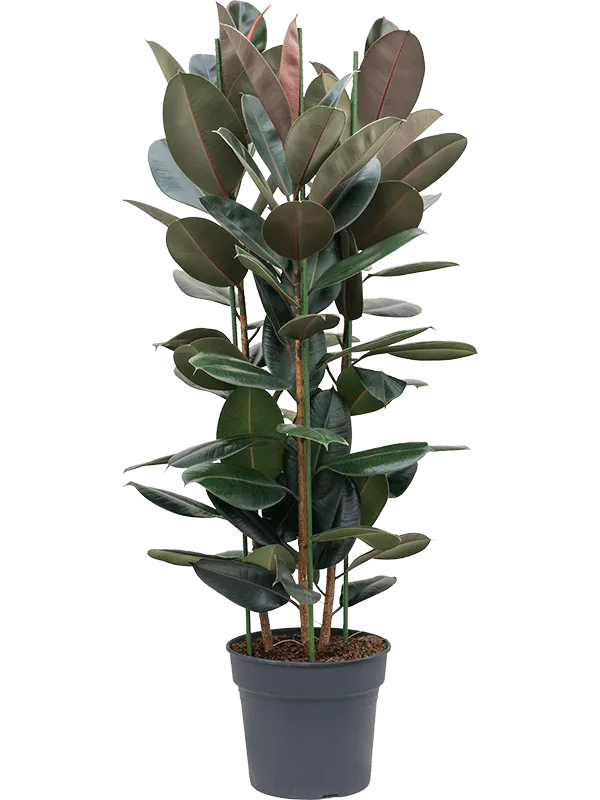
Why We Love It: The Rubber Plant is a low-maintenance option that adds a bold, modern touch to any room. Its deep green, glossy leaves are both stylish and easy to care for. This plant can grow up to 10 feet tall with the right care.
Care Tips:
- Light: Bright, indirect light
- Water: When the soil feels dry
- Humidity: Moderate
- Temperature: 60-75°F (15-24°C)
Pro Tip: Prune the top leaves to encourage bushier growth. This plant is resilient and can tolerate a bit of neglect.
4. Areca Palm (Dypsis lutescens)
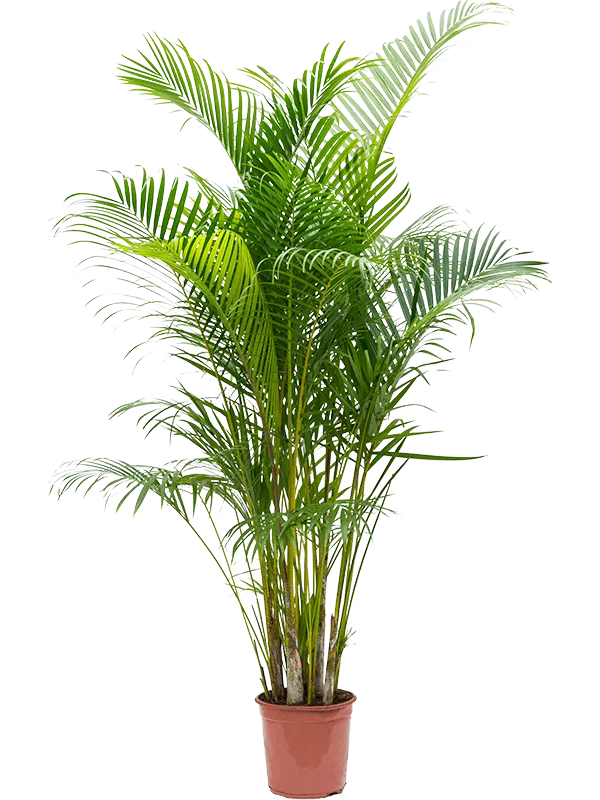
Why We Love It: Also known as the Butterfly Palm, the Areca Palm creates a breezy, tropical atmosphere. Its feathery fronds are perfect for adding a relaxed vibe to your home. This plant is also an excellent air purifier.
Care Tips:
- Light: Bright, indirect light
- Water: Keep soil slightly moist, but avoid waterlogging
- Humidity: Moderate
- Temperature: 65-80°F (18-27°C)
Pro Tip: This plant is pet-friendly, making it a great choice for homes with furry friends.
5. Monstera Deliciosa (Swiss Cheese Plant)
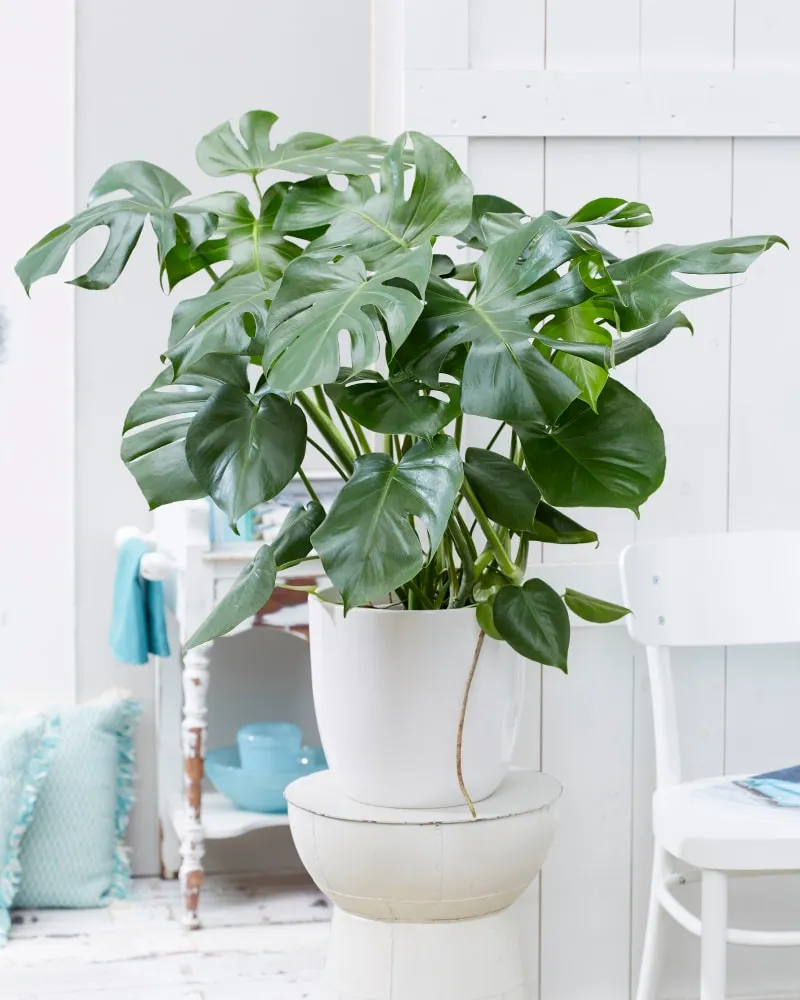
Why We Love It: The Monstera Deliciosa is an Instagram favorite, known for its dramatic, hole-filled leaves. This plant can climb up to 8 feet indoors and adds a unique touch to any space.
Care Tips:
- Light: Bright, indirect light
- Water: When the soil dries out
- Humidity: High
- Temperature: 65-80°F (18-27°C)
Pro Tip: Add a moss pole to help it grow upwards. Be patient—those iconic splits in the leaves will develop over time.
6. Corn Plant (Dracaena fragrans)
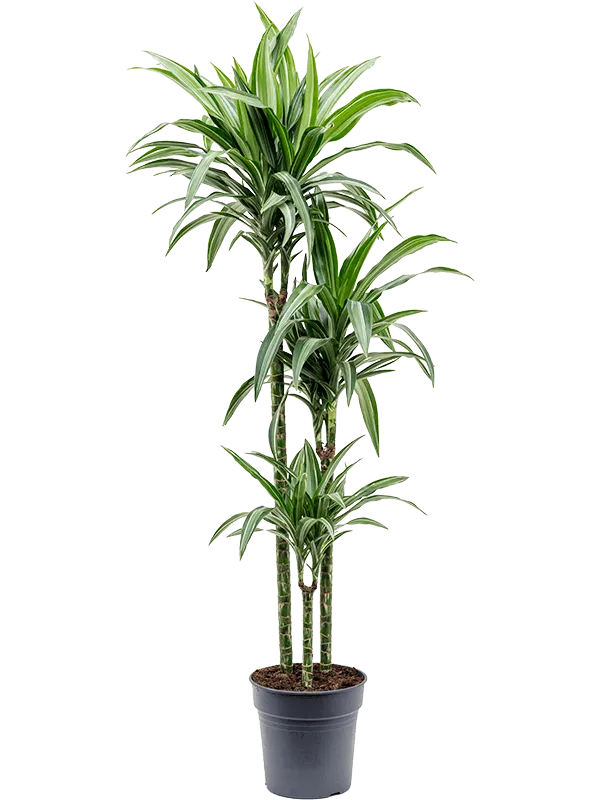
Why We Love It: The Corn Plant is a fuss-free option that adds height and style to any room. Its long, sword-like leaves resemble a tropical palm and can grow up to 7 feet tall.
Care Tips:
- Light: Low to bright indirect light
- Water: Infrequently, when the soil is dry
- Humidity: Low to moderate
- Temperature: 60-75°F (15-24°C)
Pro Tip: Keep it away from direct sunlight to avoid leaf burn. This plant is known for improving air quality.
7. Kentia Palm (Howea forsteriana)
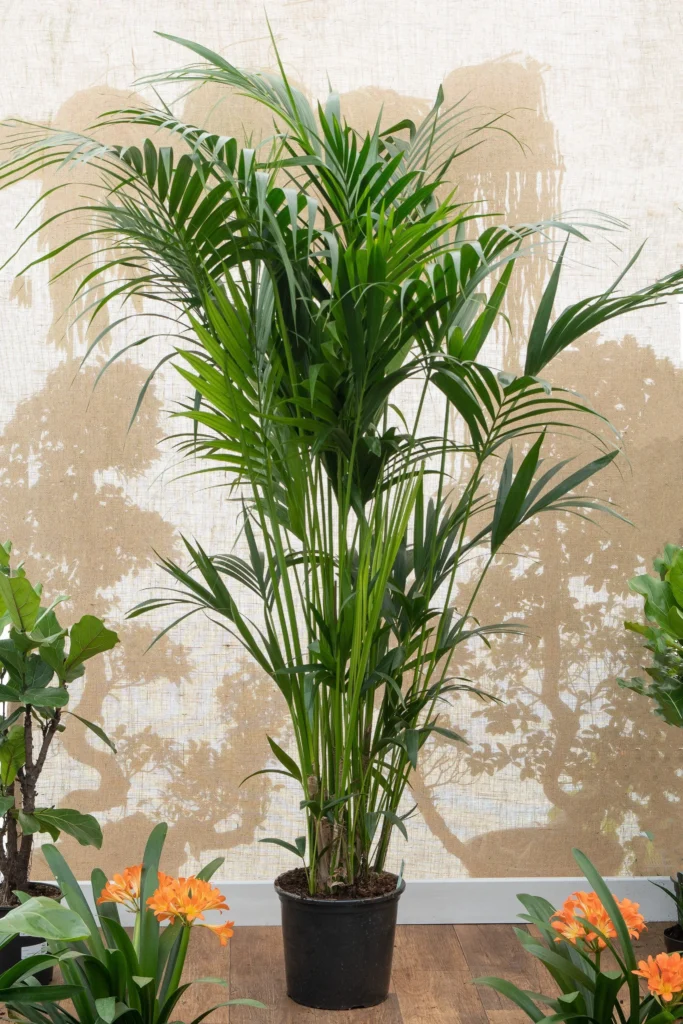
Why We Love It: The Kentia Palm is an elegant, timeless choice that grows tall without being fussy. Its graceful fronds create a relaxed, tropical atmosphere.
Care Tips:
- Light: Medium to bright indirect light
- Water: When the soil is dry
- Humidity: Low to moderate
- Temperature: 60-75°F (15-24°C)
Pro Tip: This plant is drought-tolerant and adapts well to indoor conditions, making it perfect for busy homeowners.
8. Umbrella Tree (Schefflera actinophylla)
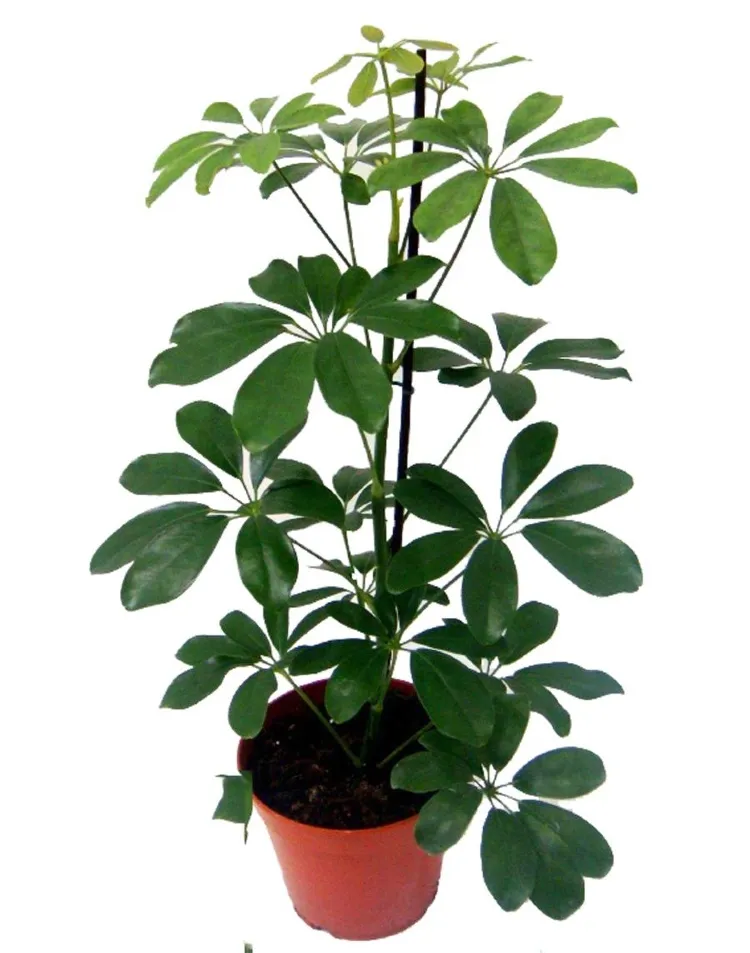
Why We Love It: The Umbrella Tree’s unique, umbrella-like leaves make it a standout choice. This fast-growing plant is forgiving and can fill empty corners beautifully.
Care Tips:
- Light: Bright, indirect light
- Water: Occasional deep watering
- Humidity: Moderate
- Temperature: 60-75°F (15-24°C)
Pro Tip: Rotate the plant occasionally to ensure even growth. This plant is super forgiving, even if you forget to water it now and then.
9. Dragon Tree (Dracaena marginata)
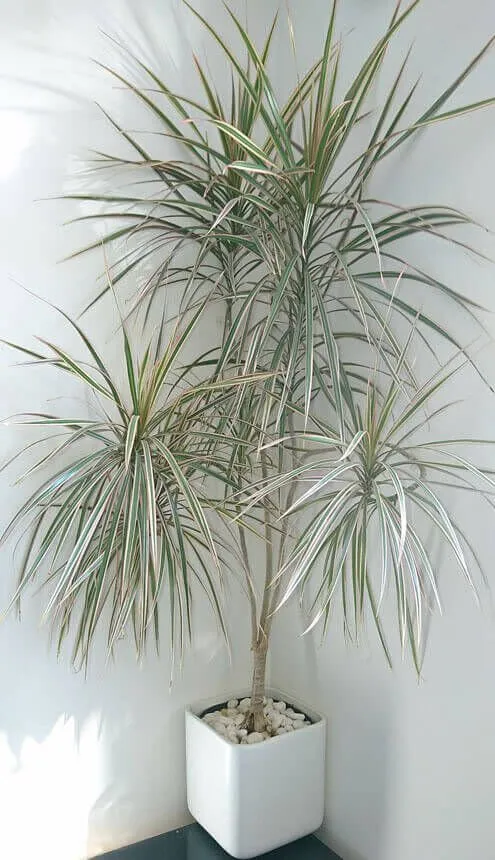
Why We Love It: The Dragon Tree adds a sleek, modern vibe to any room with its long, thin leaves and striking red edges. This plant is low-maintenance and great for beginners.
Care Tips:
- Light: Low to bright indirect light
- Water: When the soil is dry
- Humidity: Low to moderate
- Temperature: 60-75°F (15-24°C)
Pro Tip: This plant helps filter indoor air, removing toxins and keeping your home fresh.
10. Bamboo Palm (Chamaedorea seifrizii)
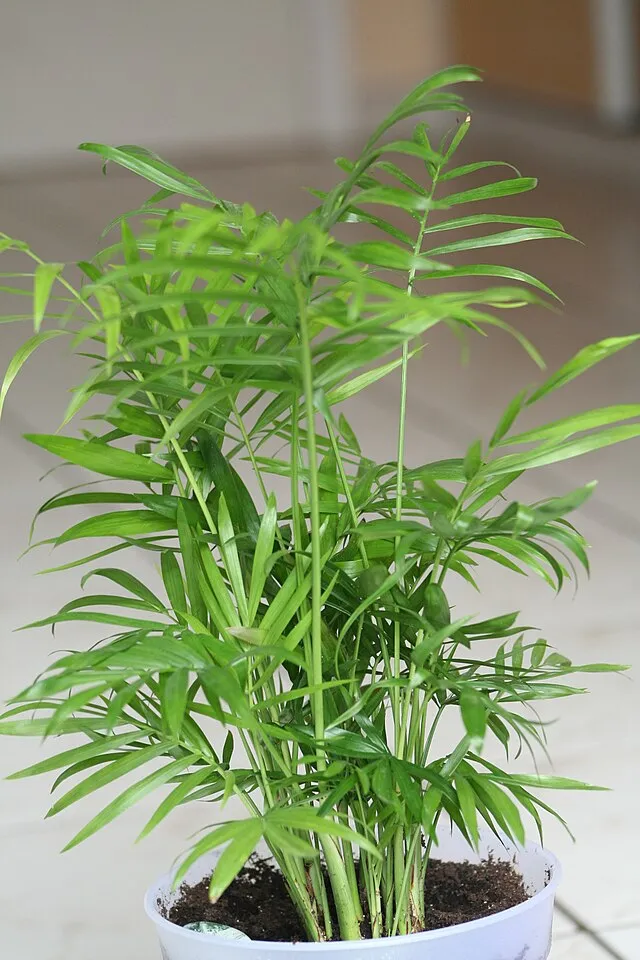
Why We Love It: The Bamboo Palm brings a Zen-like, tropical feel to any home. Its clustered fronds create a lush, natural screen that can reach up to 8 feet indoors.
Care Tips:
- Light: Medium to bright indirect light
- Water: Keep soil lightly moist
- Humidity: High
- Temperature: 60-75°F (15-24°C)
Pro Tip: This plant is one of NASA’s top air-purifying plants, making it a great choice for improving indoor air quality.
Conclusion
Transforming your home into a lush oasis has never been easier! These 10 tall houseplants offer a mix of style, ease of care, and air-purifying benefits. Whether you’re drawn to the dramatic Fiddle Leaf Fig, the tropical Bird of Paradise, or the sleek Dragon Tree, there’s a perfect plant for every home. Share your favorite in the comments below and stay tuned for more plant care tips and inspiration!
Frequently Asked Questions (FAQ) About Tall Houseplants
What are the best tall houseplants for beginners?
If you’re new to plant parenting, consider starting with the Rubber Plant (Ficus elastica) or the Areca Palm (Dypsis lutescens). Both are low-maintenance and can tolerate a bit of neglect. The Rubber Plant thrives in bright, indirect light and needs watering only when the soil feels dry. The Areca Palm loves bright, indirect light and prefers slightly moist soil, making it a great choice for adding a tropical vibe without much fuss.
How often should I water my tall houseplants?
Watering frequency varies depending on the plant type and environmental conditions. As a general rule:
Fiddle Leaf Fig: Water when the top inch of soil dries out.
Bird of Paradise: Keep the soil lightly moist.
Rubber Plant: Water when the soil feels dry.
Areca Palm: Keep soil slightly moist but avoid waterlogging.
Monstera Deliciosa: Water when the soil dries out.
Corn Plant: Water infrequently, when the soil is dry.
Kentia Palm: Water when the soil is dry.
Umbrella Tree: Occasional deep watering.
Dragon Tree: Water when the soil is dry.
Bamboo Palm: Keep soil lightly moist.
Always check the specific needs of your plant and adjust based on the humidity and temperature of your home.
Which tall houseplants are pet-safe?
If you have pets, the Areca Palm (Dypsis lutescens) is a great choice. It’s known for being pet-friendly and adds a tropical vibe to your home. Other pet-safe options include the Kentia Palm (Howea forsteriana) and the Bamboo Palm (Chamaedorea seifrizii). Always research the specific plant to ensure it’s safe for your furry friends.
How can I ensure my tall houseplants grow tall and healthy?
Proper care is key to promoting healthy growth. Here are some tips:
Light: Ensure your plants receive the right amount of light. Most tall houseplants thrive in bright, indirect light.
Water: Water consistently but avoid overwatering. Check the soil moisture before watering.
Humidity: Some plants, like the Bird of Paradise and Monstera Deliciosa, prefer higher humidity. Mist the leaves or place a humidifier nearby.
Pruning: Regularly prune dead or yellowing leaves to encourage new growth.
Support: For climbing plants like Monstera Deliciosa, provide a moss pole or trellis for support.
Which tall houseplants are best for air purification?
Several tall houseplants are known for their air-purifying qualities:
Areca Palm (Dypsis lutescens): An excellent air purifier that removes toxins and adds a tropical touch.
Bamboo Palm (Chamaedorea seifrizii): One of NASA’s top air-purifying plants, it thrives in medium to bright indirect light.
Rubber Plant (Ficus elastica): Helps filter indoor air and is easy to care for.
Dragon Tree (Dracaena marginata): Removes toxins and adds a sleek, modern vibe to your home.
How do I care for a Fiddle Leaf Fig?
The Fiddle Leaf Fig (Ficus lyrata) is a stylish but somewhat demanding plant. Here’s how to keep it happy:
Light: Bright, indirect light is ideal. Avoid direct sunlight, which can scorch the leaves.
Water: Water when the top inch of soil dries out. Ensure the pot has drainage holes to prevent waterlogging.
Humidity: Moderate humidity is preferred. Mist the leaves occasionally or place a humidifier nearby.
Dusting: Dust the leaves regularly to keep them clean and looking their best.
Temperature: Maintain a temperature between 65-75°F (18-24°C).
Can I grow these tall houseplants in low light?
While most tall houseplants prefer bright, indirect light, some can tolerate lower light conditions:
Corn Plant (Dracaena fragrans): Tolerates low light and requires infrequent watering.
Dragon Tree (Dracaena marginata): Can handle low to bright indirect light and is drought-resistant.
Kentia Palm (Howea forsteriana): Adapts well to medium to bright indirect light and is drought-tolerant.
However, even these plants will thrive better in brighter conditions. If your home has low light, consider using grow lights to supplement natural light.
How do I know if my plant is getting too much or too little light?
Here are some signs to look for:
Too Much Light: Yellowing leaves, leaf burn, or brown spots on the leaves.
Too Little Light: Slow growth, leggy stems, and leaves that are smaller than usual.
Adjust the plant’s location based on these signs. If you notice yellowing or burnt leaves, move the plant to a spot with less direct sunlight. If growth is slow or leaves are small, try moving the plant closer to a window.
How often should I fertilize my tall houseplants?
Most tall houseplants benefit from regular fertilization during the growing season (spring and summer). Use a balanced, water-soluble fertilizer every 4-6 weeks. Follow the instructions on the fertilizer package for the correct dosage. Avoid fertilizing during the dormant season (fall and winter) to prevent over-fertilization.
Can I grow tall houseplants in small spaces?
Absolutely! Many tall houseplants can be grown in smaller spaces with the right care. For example:
Kentia Palm (Howea forsteriana): Grows tall without being too wide, making it perfect for apartments.
Dragon Tree (Dracaena marginata): Adds height without taking up much floor space.
Bamboo Palm (Chamaedorea seifrizii): Grows in clusters and can fit into smaller corners.
Choose a plant that fits your space and ensure it has enough room to grow upwards.
How do I propagate tall houseplants?
Propagation methods vary by plant, but here are some common techniques:
Fiddle Leaf Fig: Take a stem cutting with a few leaves and place it in water or moist soil. Roots should form within a few weeks.
Bird of Paradise: Divide the root ball during repotting. Ensure each division has roots and leaves.
Rubber Plant: Take a stem cutting and place it in water or moist soil. Keep the soil consistently moist until roots form.
Monstera Deliciosa: Use stem cuttings with aerial roots. Place the cutting in water or soil, and keep it in bright, indirect light.
Always research the specific propagation method for your plant to ensure success.
How do I prevent pests on my tall houseplants?
Preventing pests involves regular care and vigilance:
Regular Inspection: Check your plants weekly for signs of pests like spider mites, mealybugs, and scale.
Clean Leaves: Dust and wipe down leaves regularly to prevent pests from settling.
Healthy Environment: Maintain the right light, water, and humidity levels to keep your plants healthy and less susceptible to pests.
Natural Remedies: Use neem oil or insecticidal soap to treat infestations. Always test a small area first to ensure the plant tolerates the treatment.
How do I know if my plant needs repotting?
Here are some signs your plant may need repotting:
Roots Emerging: If roots are growing out of the drainage holes or circling the base of the plant.
Slow Growth: If the plant is not growing as expected despite proper care.
Soil Compaction: If the soil is compacted and water drains too quickly or not at all.
Top-Heavy: If the plant is top-heavy and tips over easily.
Repot your plant into a pot that is 1-2 inches larger in diameter, using fresh, well-draining soil.
How can I make my tall houseplants look fuller?
Encourage fuller growth with these tips:
Pruning: Prune the top leaves of plants like the Rubber Plant and Dragon Tree to encourage bushier growth.
Staking: Use stakes or moss poles to support climbing plants like Monstera Deliciosa, which can help them grow upwards and appear fuller.
Light Rotation: Rotate your plants regularly to ensure even light exposure, promoting balanced growth.
Fertilizing: Regularly fertilize during the growing season to support healthy growth.
Can I grow tall houseplants outdoors?
Some tall houseplants can thrive outdoors in the right conditions. For example:
Bird of Paradise: Can be grown outdoors in USDA zones 9-11, where it thrives in full sun to partial shade.
Rubber Plant: Can be grown outdoors in USDA zones 10-11, where it prefers bright, indirect light.
Bamboo Palm: Can be grown outdoors in USDA zones 10-11, where it prefers partial shade.
Always check the specific hardiness zones and light requirements for your plant before moving it outdoors.
Other Sources
Tall Outdoor Plants for Landscaping The Family Handyman
Growing Rubber Plants Outdoors: Tips & Tricks:
The Best Tall Houseplants: 25 Tree-Like Plants to Grow Indoors

